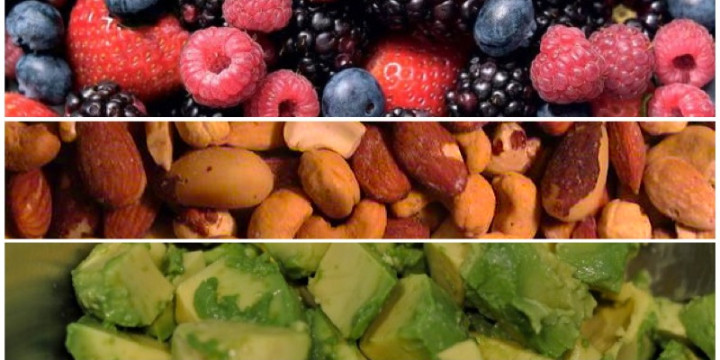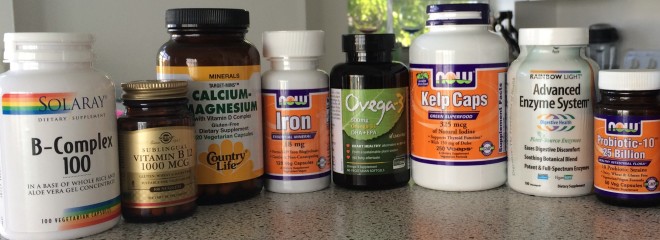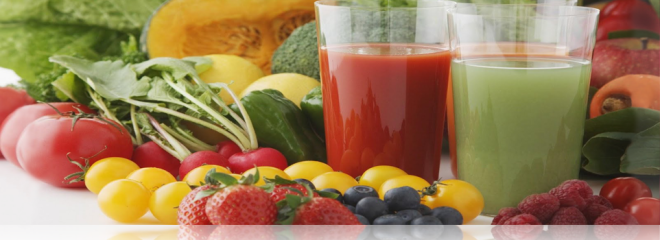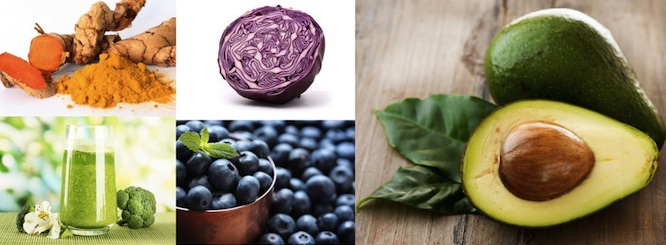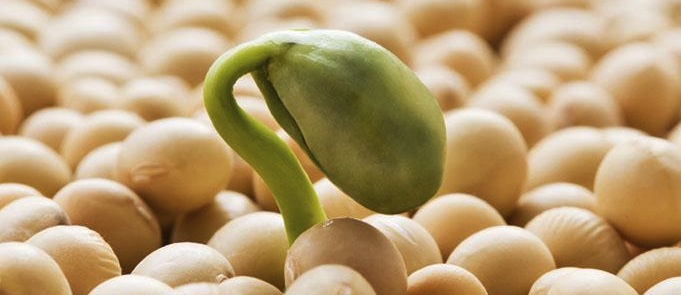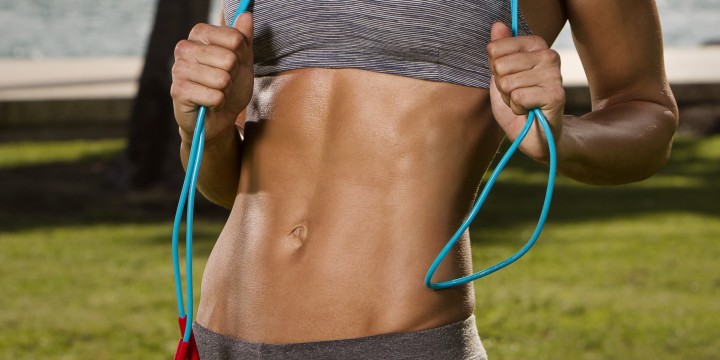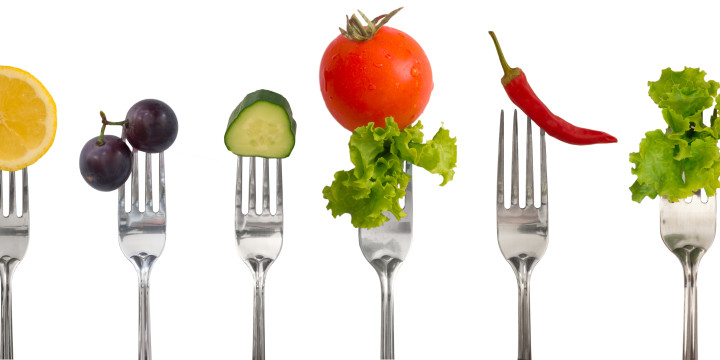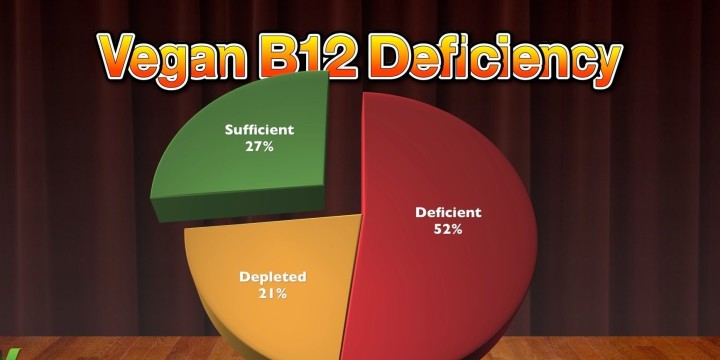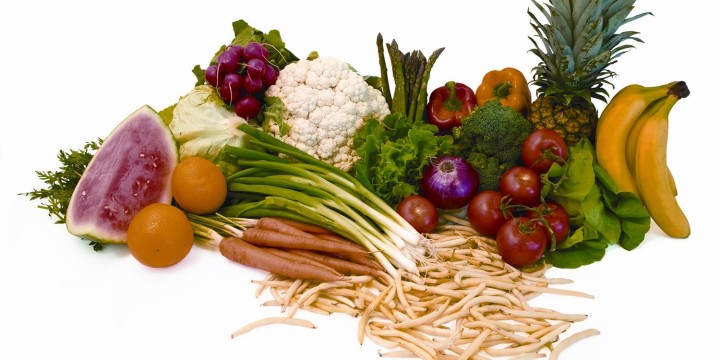Top 7 Nutrients You May Need to Supplement
One of the most common questions I receive (after, “How do you get your protein?”) is, “Do you take supplements?” I have been vegan 18 years (vegetarian 26 years) and during that time I have heard so much conflicting information from different people and groups. Most of this information had very little, unbiased, conclusive research to back it up. Only recently has scientific data started to be published on the long-term health effects of a vegan diet. Upon learning about this new research, I went from taking only B-12, to adding 5 more nutrients to my supplement list.
My base reason for maintaing a vegan diet is, and always has been my strong belief that it is not okay to harm, kill, or exploit animals for any reason. I mention this now because personally, no matter what the scientific data tells us, I will remain vegan until the day I die because I want my actions to match my values.
That being said, my mission in life, in addition to changing the way our culture views and treats animals and the environment, includes helping humans live the healthiest, happiest lives possible. The awesome thing about this is that we can achieve all three components of my mission with one solution… a well-balanced, whole foods, plant-based diet!!!
I am writing this article to present the most up to date information I am aware of when it comes to getting all the nutrients we need, in the right amounts, to live long, quality lives. Here are the 6 nutrients people on a vegan diet need to pay closest attention to:
1. B-12 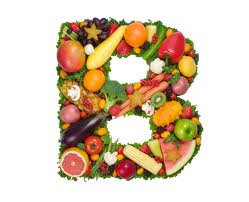
Every single person on a vegan diet, no matter how balanced and healthy you eat, must supplement their diet to get the appropriate levels of B-12 in their system. For more information on why this is the case, click HERE. The simplest way to ensure you get enough is taking an oral supplement. There are many B12-fortified foods on the shelves, such as certain cereals and nut milks, but instead of trying to make sure you eat those specific foods every day, I recommend simply taking a supplement. The recommended amount is either a single dose of 2,500 mcg per week, or a daily dose of 250 mcg in the form of a chewable, sublingual, or liquid vitamin. You may not experience any symptoms of B12 deficiency until you have irreversible neurological damage.
2. DHA
There is research that shows one reason people, and for some reason vegans especially, can have health problems later in life is due to a consistently high omega 6:omega 3 fatty acids. Omega 6 fatty acids are pro-inflammation, and omega 3 fatty acids are anti-inflammation. For more on inflammation click HERE. We need both to survive, but in general, we are consuming way too much omega 6, and too little omega 3. We can get the short-chain omega 3 fatty acids from several plant-foods such as flax seeds and walnuts, however we usually cannot convert enough of this form, to the long-chain omega 3 fatty acid DHA. It is therefore recommended for those on a plant-based diet to take a vegan, algae-based DHA supplement. In fact, I tell everyone taking a fish oil to switch to an algae-derived supplement (where do you think the fish get the omega 3s from? Why risk the heavy metal contamination and sea environmental destruction to get the fish oil, when we can easily grow the algae in a controlled environment without contaminants or sea devastation!)
3. Calcium
Despite the common myth that we need cow’s milk to get enough calcium, it’s certain green vegetables that have the highest absorption rate. You will actually absorb more calcium from broccoli, kale, and bok choy than cow’s milk, and soybeans absorb calcium equally as well as cow’s milk. Higher oxilate-containing greens, such as spinach and beet greens however, have poor calcium absorption. Therefore, if you are eating enough of the calcium-containing foods with good absorption and/or eating enough calcium-fortified foods, you may very well be getting in your recommended daily value of calcium, which is (according to the National Institute of Health in 2013) 2,500 mg for adults age 19-50, 2,000 for ages 51+ (see HERE for more) . If this is not the case however, a calcium supplement is appropriate to prevent osteoporosis down the road.
4. Iron
Most of us were raised believing we need to eat cows (red meat) to get iron in our diets. This is not at all true. Many plant foods are high in iron like chick peas and pumpkin seeds, and the iron is absorbed particularly well when we eat these with foods high in vitamin C like broccoli and citrus. We have to be careful though… if we don’t absorb enough, we risk anemia, but if we absorb too much, our bodies can become overloaded, causing oxidative stress, a boost of free radicals, all greatly increasing our risk for cancer. Our intestines are able to help regulate our iron levels by absorbing more from plant foods if we are low, and absorbing less if we are levels are “in the sweet spot.” BUT this is only true for plant foods. Interestingly, intestines cannot play this same role for iron in blood from animal foods non-vegans consume. It is recommended, that before deciding to take an iron supplement, you have your iron levels checked and only begin a careful iron supplement regiment if your level is low.
5. D
 Vitamin D is a tricky one. Recently it has been discovered that the majority of Americans (vegan and omnivores alike) are vitamin D deficient. Vitamin D plays a more important role in preventing chronic disease than we once thought. With the right amount of sunlight, it is possible, but not probable to get the recommended amount. Knowing if you are getting the enough sun on enough of your skin is difficult and depends on your location in the world and time of year. Plus, it is thought that sunscreen negates our ability to make vitamin D from the sun, and without sunscreen we put our skin at great risk for harmful aging and cancer-causing UV rays thanks to ozone depletion. There are few foods that contain vitamin D in ideal amounts. Basically, I’m saying that there is a good chance you need to eat fortified foods and/or supplement. Many nut milks and cereals on the grocery shelves are fortified with vitamin D, but again, if you are not consuming enough consistently this way, a supplement may be a good idea.
Vitamin D is a tricky one. Recently it has been discovered that the majority of Americans (vegan and omnivores alike) are vitamin D deficient. Vitamin D plays a more important role in preventing chronic disease than we once thought. With the right amount of sunlight, it is possible, but not probable to get the recommended amount. Knowing if you are getting the enough sun on enough of your skin is difficult and depends on your location in the world and time of year. Plus, it is thought that sunscreen negates our ability to make vitamin D from the sun, and without sunscreen we put our skin at great risk for harmful aging and cancer-causing UV rays thanks to ozone depletion. There are few foods that contain vitamin D in ideal amounts. Basically, I’m saying that there is a good chance you need to eat fortified foods and/or supplement. Many nut milks and cereals on the grocery shelves are fortified with vitamin D, but again, if you are not consuming enough consistently this way, a supplement may be a good idea.
6. Magnesium
The health benefits of magnesium was, for a long time, underestimated. Magnesium favorably affects our risks for insulin resistance, and many of our top killers like hypertension, type 2 diabetes, and cardiovascular disease. Magnesium acts to help in the production of ATP (the energy molecules of your body), the action of your heart muscle, formation of bones and teeth, relaxation of blood vessels, regulation of bowel movements, and regulation of blood sugar levels. Important stuff! Magnesium is found in leafy greens, legumes, nuts, seeds, and whole grains. Some of the foods highest in magnesium include seaweed (agar), pumpkin seeds, flaxseeds, cocoa, and almonds. Therefore, if you are eating a balanced, whole foods, plant-based vegan diet, you very well could be ok. Most vegans and vegetarians have higher magnesium levels than most meat-eaters for that reason. So why am I mentioning it? My hope is that working out is a large part of your life routine, and since we loose some magnesium through sweat, and magnesium has been found to aid in recovery, it is something to take note of! So if you are not getting at least the recommended amount (400 mg, see HERE for details) of magnesium daily, you may want to supplement. A magnesium-calcium-D combination supplement could be the best option because they all work synergistically and maintaining a proper ratio is also important.
7. Iodine
It has recently come into the spotlight that many health-conscious vegans are deficient in iodine, something I had never heard before. If you are like me, and do not consume iodized salt regularly (I only keep non-iodized Himalayan and Celtic sea salt in my home), eating sea vegetables/seaweed on a regular basis can be the easiest way to ensure adequate levels. Kelp however, is so loaded with iodine that it can cause an iodine overdose which can adversely affect your thyroid, so be careful. On the other end of the spectrum, it was found that vegans that ate certain healthy foods, like flaxseeds and broccoli, that contain what’s called a goitrogenic compound which can interfere with thyroid function in those with inadequate iodine levels. The RDA recommends 150 mcg per day (with the upper limit set at 1,000 mcg by the World Health Organization), while some experts believe this is too low for many people.
I realize that all of this can seem overwhelming. It is important however, to do our best to soak in the information, take a look at our diets, and see if anything we are eating, or not eating, could be causing us imbalances with the potential for harm. This is important for EVERYONE to do, not just vegans by the way. Many times, signs and symptoms of deficiencies are not recognized or diagnosed until irreversible damage. If you take away one point from this article however, let it be that all vegans must consume a B12 supplement for optimal health!
Considering a Juice Cleanse? Top 5 Tips for Success.
A juice cleanse is fantastic way to pack your body full of disease-fighting nutrients, give your digestive system a break from processing heavy proteins, fats, and other foods that are taxing on your organs to digestive, clean your colon, and flush out toxins from your body. Many people believe that if they manage to get through a juice cleanse for a few days, losing weight will automatically be an additional benefit. In fact, it may be the most motivating perceived benefit of them all! There are many things to take into consideration when it comes to doing a juice cleanse however. Here are my top 5 tips for success when it comes to detoxifying your body, losing both water weight & body fat, & improving your health:
1. Ease your way into juicing.
Does your current diet contains animal products and/or processed foods? If so, it is important to take steps to eliminate those foods, replacing them with plant based whole foods. As you do this, start to incorporate more and more raw foods, decreasing the amount of cooked foods, so in the days prior to beginning juicing you are eating as close to a vegan raw food diet as possible. Following your juicing period (for newbies, a 3 day cleanse may be best, although a 5 day cleanse is more effective for longer-term benefits), you will want to ease out of it, starting with the raw food diet, then incorporating some plant-based whole cooked foods. If you don’t go back to animal products and processed foods, all the health benefits will continue for a lifetime! It is the perfect time to make this choice, because you have managed to have fought off your addiction to harmful foods, so you can use the opportunity to break old habits and keep from returning to your former state of health!
2. Know what to expect.
Everybody experiences different “side effects” during a juice cleanse, especially during the first few days. Some common ones are headache, fatigue, minor skin blemishes, hunger, & irritability. These are caused by the detoxification process your body is going through. Depending on what your diet was like before, some symptoms could even be described as withdrawal from addictive food/drink products. Being prepared for this is important. During the first few days of the juice cleanse, create your schedule with these potential effects in mind. Don’t plan important work meetings or social events for example.
3. Keep your eye on the prize.
Keep telling yourself… “The results are worth it!” The results often being clear skin, positive mood, improved digestion, feeling clear-headed, losing water weight, losing body fat, improved digestion, increased energy levels, and an overall sense of well-being. (Remember though, following tip #1 is essential for gaining these benefits!)
4. Choose a juice cleanse provider wisely.
If juicing is new to you, chances are you will be choosing a cleanse from a company that sells juice cleanse packages (as opposed to making your own). There are a few things you want to look for when making your decision. First, choose a company that makes juice using a cold-press, as it has been found to transfer more of the nutrients from plant to juice. Second, make sure the juices are 100% certified organic. If not, all those fruits and veggies they use (and it takes pounds of them to make a single juice) may contain pesticides and could be genetically modified (some GMO foods are actually technically a pesticide themselves because they are created with the ability to kill insects that try to eat them!) Third, make sure the juices contain a wide variety of vegetable and fruits so you will be getting as many of the different nutrients your body need as possible. There should be plenty of green vegetables in the juices! And last, find a company that is supportive throughout your cleanse, gives you information on the ingredients and why they are combined as they are, have a knowledgable, friendly staff and someone who will be available to give you answers if you have any questions throughout the cleanse.
5. Get support.
If you can find a “cleanse-buddy” (a reliable one) it is probably the most effective way to be successful… someone to share in your experience, to hold each other accountable, bitch and moan with when it gets tough, and someone to celebrate with when you have completed it (and I don’t mean with a candy bar;)). You CAN do it on your own, but you still need to establish a support system. As I mentioned in tip 4, make sure to choose a juice provider that can be a resource to you throughout the process. Otherwise, whether it be a friend you ask to be there for you, or a group you find on a forum or social media site… whatever works best for you, but you need to have them prepped and ready to help!
So there you go! You are ready to get off to a great start on your juice cleanse venture! If you haven’t seen it, I recommend you watch this documentary before you begin!
*Juice cleansing is not recommended for everyone. It is not recommended for pregnant women & people with certain medical conditions. Seek professional advice if you are not sure if juicing is right for you.
Fighting Chronic Inflammation
Chronic inflammation can be one of the main underlying causes of illness and disease. It can also cause premature aging and weight gain. The truth of the matter is, reducing inflammation in your body can literally save your life.
The good news is that there are some simple ways to prevent and treat inflammation. In a nutshell, eating a whole-foods, fiber rich, nutrient-dense vegan diet is synonymous with an anti-inflammatory diet!
Let’s first look at the top inflammation-causing foods that we need to eliminate from our diets. Chicken and eggs are the top sources of arachidonic acid in the diet, an omega 6 fatty acid involved in our body’s inflammatory response. Trans and Saturated fats, found in meats, especially deli meats, highly processed oils such as canola, safflower, and corn oils, some margarines are among the top culprits of inflammation. Dairy products cause an inflammatory response in the body, as do processed sugars and grains, table salt, and alcohol.
Eating a variety of vegetables and fruits is the best way to fight inflammation in our bodies. Here is a list of some of the foods that have been found to have particularly strong anti-inflammatory effects:
- Chia seeds (crushed to make them more bioavailable (easier for your body to use))
- Avocado
- Walnuts
- Cooked white mushrooms
- Kelp
- Cruciferous Vegetables (broccoli, brussels sprouts, kale, cauliflower)
- Blueberries
- Turmeric
- Green Tea
- Garlic
- Ginger
- Sweet potatoes
It is also important to avoid allergens in order to reduce inflammation. Gluten, dairy, and peanuts are a few common allergen examples.
Finally, regular exercise is important to ward off inflammation.
Check out the Sexy Fit Vegan Guidelines and download your free copy of the Sexy Fit Vegan Sample Meal Plan to help you get started on your anti-inflammatory diet today!
Straight Talk About Soy
In the last few years we have all heard a ton of conflicting recommendations on consuming soy. So what’s the real deal with soy?
Well first of all, there is good soy and bad soy. Consider soy that is genetically modified, moderately/highly processed, and/or not organic, to be “bad soy.” The effects of these types of soy products are unclear, but we do know that they do not offer the same benefits as good soy. “Good soy” is that which is organic and unprocessed (whole soy beans) or minimally processed (tempeh and tofu). Also, keep in mind that we are discussing a moderate intake of soy (3-4 servings/day). A healthy vegan diet involves consuming a wide variety of legumes, vegetables, fruit, seeds, nuts, and whole grains. More than 3 servings of soy per day, for most people, means that you will not be getting enough of a variety of other foods with important nutrients our bodies need to be healthy. Another tip is that I recommend using non-soy milks such as almond or coconut to “save” your soy servings for edamame, tofu, and tempeh so you are getting unprocessed soy with all the fiber and protein in tact!
That being said, let’s address the common concerns in regards to GOOD soy, based on the latest, most conclusive findings.
One question that’s simple to answer is, “Are soybeans really a quality protein source?” The answer is YES! Soybeans contain a 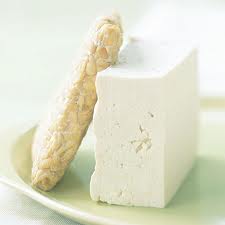 large amount of high quality protein. They are also a complete protein, meaning they contain all the essential amino acids we need to build muscle. The great thing about soybeans is that you can consume the protein without the cholesterol that you get with meat.
large amount of high quality protein. They are also a complete protein, meaning they contain all the essential amino acids we need to build muscle. The great thing about soybeans is that you can consume the protein without the cholesterol that you get with meat.
Getting a bit more complicated and controversial is the question, “Does soy contain estrogen that could cause breast cancer in women and have adverse side effects on men?” Simply put, soybeans contain isoflavones, a class of “phytoestrogen” that has been found to have some meaningful health benefits to humans. For a more detailed explanation of the physiological effects of phytoestrogen in the human body click HERE. A majority of studies have shown that phytoestrogen from soybeans act as a protective factor for breast cancer as well as increase one’s chance for survival from breast cancer. In addition, it appears that soy may reduce the risk of other cancers, particularly prostate and colon cancers.
Another common concern is the belief that soy will cause thyroid dysfunction. Based on the available research, this is not the case. The issue comes only with people who have an existing thyroid condition for which they take medication. Soy can alter how some thyroid medications are absorbed in the intestines and it is therefore important to discuss your soy intake with the doctor upon being prescribed such medication.
Last, you may be wondering if soy is good for your heart. It seems that soy does have a positive effect on heart health. The isoflavones in soy have a dilating effect on our blood vessels, reducing blood pressure. Soy is also high in fiber, which is a protective factor for heart disease.
So there you have it… the simple, condensed answers to your common soy-related questions and concerns. The verdict, for most people, a moderate intake of organic, unprocessed soy is a healthful choice, although you certainly don’t NEED to consume soy in order to maintain a healthy, balanced plant-based diet.
I am providing a few solid resources that go into more detail on the latest research if you are interested in learning specifics.
nutritionfacts.org/video/breast-cancer-survival-and-soy/
nutritionfacts.org/video/how-much-soy-is-too-much/
Top 5 Tips for a Sexy Fit Midsection
Who doesn’t want a beautifully sculpted, sexy stomach?! I hear it from students and clients all the time. “How do I get rid of this?” they ask, as they grab and pinch belly fat. Well I have compiled a list of what it takes to achieve that toned tummy you are longing for. If it were easy, everyone would have a shot at the cover of Fitness Magazine! But it is do-able… And YOU CAN DO IT!!!
 1. Cut “empty calories” from your diet.
1. Cut “empty calories” from your diet.
Your first thought might be that you don’t want to “deprive” yourself of the soda and chips you love so much. But here’s the deal. You are actually depriving yourself by eating them! What I mean is that you are filling up on foods that are missing the nutrients your body needs to survive and thrive. Make this a habit and our body actually goes into starvation mode and holds onto your body fat because of it. By replacing the empty calories with nutrient-dense ones, your body gets what it wants and allows fat to be eliminated. Don’t get me wrong, I am not saying never splurge, but even when you splurge, you can do it without filling yourself full of empty calories! For example, I make a killer popcorn with coconut oil on movie night. And when I get a sweet tooth, one of my favorite treats is coconut milk ice cream. Give it some time and you will never miss that chemical, fake buttered popcorn or Ben & Jerries!
2. Get in your cardio workouts.
Cardio workouts (workouts in which you have your heart rate elevated for over 30 minutes) are important in two ways. First, it’s the way to keep your heart beating strong, which keeps you alive. And second, it burns fat. Pretty simple.
 3. Choose exercises that involve “core strength.”
3. Choose exercises that involve “core strength.”
Your core basically encompasses your body from your chest to your butt. Increasing your core strength means not only sculpting a sexy, toned midsection, but also strengthening your body in such a way that will improve your posture, give you stability, and prevent injuries. If focus only on your abs, you will set yourself up for bad posture, back problems, and injury. Most exercise machines take your core out of the exercise by acting as your stabilizer. This is neither functional nor efficient. Instead of doing the leg press machine for example, do squats. Instead of chest press, do push-ups (you can add weight to your back to make it more challenging! Get creative, have fun with it! Flip tires 😉 Do dumbbell rows from a plant position, so you work your back and core at the same time! For examples of exercises that utilize your core, click here.
4. Stay hydrated.
Water retention leaves us puffy and bloated. Not so helpful when your goal is a flat stomach! The most effective ways to prevent water retention are to stay hydrated with plenty of water throughout the day, keep your sodium intake low, especially iodized salt found in processed foods (I use either Celtic or Himalayan Sea Salt at home), stay away from junk food and eat whole foods with lots of fiber, and exercise.
5. Eat anti-inflammatory foods daily.

Chronic inflammation can be one of the main underlying causes of illness and premature aging. It can also cause weight gain and swelling, which is why its included on this list. But the truth of the matter is, reducing inflammation in your body can literally save your life. The good news is that there are some simple ways to prevent and treat inflammation. Eating foods with anti-inflammatory properties, while eliminating inflammation-causing foods is first and foremost. Eating a whole-foods, fiber rich, nutrient-dense vegan diet is synonymous to an anti-inflammatory diet. Processed food, refined sugar, and saturated and trans fats cause inflammation. Regular exercise is also helpful in reducing inflammation, as is avoiding allergens (such as dairy, gluten, and peanuts for some people), and managing your stress.
Top 10 Tips for Going Vegan in 2014!
If you have resolved to adopt a plant-based diet in 2014 this list is for you! First of all, congratulations on the decision to hop on the path to feeling and looking your best, staying healthy and disease-free, and living conscientiously! I have compiled these tips to help you along your way:
1. Take it One Month at a Time.
You have been eating a certain way for a very long time, right? Well completely changing your whole diet overnight and expecting it to last, in most cases, sets yourself up for failure. Instead, create manageable steps month by month. For example, lets say you are a vegetarian, and you know that giving up cheese is going to be your most difficult food to eliminate. So for January, you make the decision to eliminate milk completely from your diet. Then, in February, you have “cheese-less weekdays,” meaning you do not eat cheese Monday through Friday, but allow yourself some over the weekend if you are craving it. Get the idea?
2. Instead of “Giving Up” Animal Products, “Replace” Them!
Choose vegan substitutes for the animal products you are eliminating to keep readily available at home.
If you are a milk drinker, find the non-dairy milk that you like best and stay stocked. Same goes for cheese, yogurt, and ice cream (you still get to splurge every now and then on a vegan diet!). When it comes to meat, my suggestion is that for the first couple months, if you can find substitutes that you like, even if they are not the best for you (most faux meat is processed and less healthy than choosing whole foods such as beans and nuts), allow yourself some leeway to eat them anyway as a stepping stone. Ultimately though, using these products only on occasion is the best way to attain a healthy, whole foods, plant-based lifestyle.
3. Find support from other vegans.
There are vegans everywhere these days, and we have the technology to connect, so use it! Seek out other healthy vegans in your community, there are often local vegan-related meet-ups you can join. The other option is finding support online through forums (such as the new, Sexy Fit Vegan Forum!) The more support the better!
4. Talk to your friends, coworkers, and family members about your lifestyle changes.
Old habits will stay current habits if you don’t communicate with the people who surround you on a daily basis. Talk to these people and let them know about the changes you are making, and ask them for their support.
5. Take a B-12 Supplement.
Vitamin B-12 is the one nutrient that can be difficult to get on a plant-based diet. There are many products fortified with B-12, but I think it is simply a good habit to take a supplement to ensure you are ingesting enough. A deficiency can be hard to diagnose early enough to prevent permanent damage to your body. But again, it is a simple fix. Take a supplement.
6. Find at least one Protein That You Enjoy and Use It As Your Go-To.

22 Days and Plant Fusion are two I highly recommend that contain both high levels of protein and other ingredients that pack your body with powerful nutrients. All you need is a shaker bottle to create a perfect snack. Getting enough protein to gain lean muscle can be one of the most common worries among people looking to maintain/gain muscle mass and increase strength and performance. A few shakes a day is a simple way to ensure your protein intake stays high.
7. Invest in a Vitamix.
You may look at the price tag on this thing and cringe. I did! And then I received one for my birthday and my life changed forever! Ok, that may be a little dramatic, but it made me a believer in the Vitamix. The smoothies, juices, soups, nut milks, and dips you can make, quickly and easily, makes it well worth the cost. Making a smoothie with super foods like hemp seeds, flax seeds, and dates can come out chunky with a regular blender, but with the Vitamix, you are always ensured an even, smooth shake.
8. Find Time to Plan Ahead.
The first several months, it’s important to realize that it is going to take you more time than usual to figure out your food choices. Find the time so you do not get into an “emergency situation” in which you feel like you’re starving, and have no idea what to eat! We’ve all been there. If you are like me, by the time you get to that point it’s too late for your brain to think clearly and for you to make logical decisions. Avoid this situation by making the time to plan your day’s food intake. You may need to pack a lunch, or keep healthy vegan bars in your car. Always keep good-for-you snacks around. Celery and hummus, carrots and raw almond butter for example.
9. Variety is Key.
Its important to keep in mind that eating a wide variety of vegetables, legumes, fruits, nuts, seeds, and whole grains is the key to a well-balanced plant-based diet. Chances are, by adopting this new lifestyle you will end up eating more different foods than you did before. Research plant-based super foods to add to your meals and shakes, such as hemp and chia seeds. You are exploring new options that you probably never sought out before! Keep an open mind and adopt the attitude of fun exploration rather than limitation.
10. Continue Your Education.
Continuously learn about why a vegan diet is so great by watching documentaries such as Forks Over Knives, reading articles, reading books, and even visiting factory farms and animal sanctuaries if possible. This way you will keep your motivations fresh in your head instead of letting them fade and slipping back into old habits because of it.
Cheers to the start of the healthiest, sexiest year of your life, 2014!!!
Thanksgiving on a Plant Based Diet: A Survival Guide
Its holiday time! Thanksgiving is fast approaching, and if you have committed to healthier plant-based eating, you could be getting a bit stressed about now. Maybe you are thinking, “How am I going to tell my mom I won’t be eating her infamous sausage & cheese casserole?” Or “Everyone is going to give me the 3rd degree when I turn down turkey this year!” It’s for you that I created this survival guide!
1. Plan Ahead
Don’t wait until you show up for Thanksgiving dinner to talk to your family about your food choices! Talk to those planning the gathering as far ahead of time as possible. Be equipped with some ideas and recipes that your would like to suggest and offer to either bring a few plant-based options, or be a part of the cooking  process. Here are some links to help you:
process. Here are some links to help you:
Healthy Recipes for Thanksgiving Dishes
2. Keep a Positive, Upbeat Attitude Throughout the Holiday
Instead of focusing on what you CAN’T eat, have fun exploring new dishes you CAN eat! Thanksgiving is all about gratitude, so focus on how thankful you are for your health, and how making new food choices embodies that. Also share (as in have an actual conversation) with family members how much you appreciate their support in your venture to live a healthier, more conscious and compassionate lifestyle. If you set it up in this way, your family is more than likely going to get behind you on your decision.
3. Bring Top Vegan Swaps to the Table
There are certain holiday foods or drinks you may feel you just can’t live without. Luckily for you, there are great plant-based substitutes for almost every one of these! These swaps may not be whole foods, but they will allow you to stay consistent with your vegan diet, and you can think of them as your special treats and indulge a little while eating clean otherwise. Some of my favorite holiday swaps:
Egg Nog- So Delicious Coconut Milk Nog 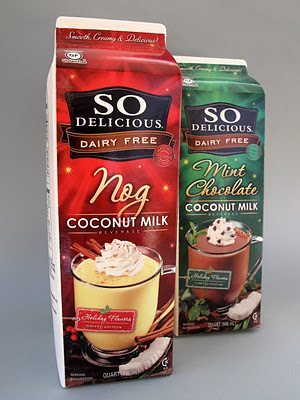
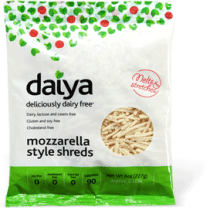
 Ice Cream- Coconut Milk Frozen Dessert
Ice Cream- Coconut Milk Frozen Dessert
4. Lead by Example
The most effective way to make a positive impact on others is to let your actions back up your words consistently. You may have recently learned a lot about all the benefits of a plant-based diet (and all the negative consequences of consumption of animal products) and would love for your friends and family to all just jump on board the vegan bandwagon as soon as you tell them about it! Well be prepared… that’s probably not going to happen. However, if you practice what you preach (and by that I mean “talk about” not really “preach”), and those around you see the positive changes in your body and your life, they will automatically want to know how to move in the same direction, and you will be there to help guide them!
The Low Down on B-12
There has been an ongoing debate on whether or not you can get enough B12 on a vegan diet without supplementation. I set out to do a review of the literature on this topic and have come to the following conclusion for myself:
There is enough evidence that a vegan diet in today’s society is likely to lead to a B12 deficiency, that I choose to consume a B12 supplement on a regular, consistent basis.
Why is this such a hot topic?
 For one, B12 is a complicated vitamin! I didn’t know how confusing a vitamin could be until the day I started researching this one! In simple terms, B12 is actually formed by a bacteria that is found mainly in soil, feces, and fecal contaminated water (I bet you didn’t think you would be reading about poop when you started this article!) We often contain the bacteria in our bodies, but it is generally found in the part of the intestine past the point where nutrients are absorbed into our bodies, so it is eliminated before doing us any good. Some animals, such as cows, have a digestive system that supports the bacteria to produce B12 within an area of the digestive tract that allow for adequate absorption. This is why eating them provides you (well, probably not YOU) the vitamin. Many animals also get this bacteria through the soil they consume along with their food. This is not the case however, if the soil being consumed does not contain adequate cobalt levels, as cobalt is necessary for B12 production. When it comes to plants, in our modern times, extreme measures are taken to rid them of all bacteria which destroys dangerous bacteria, but simultaneously kills the good bacteria that would give us B12. Vegan or not, people can become B12 deficient for other reasons as well, particularly due to malabsorption from gastrointestinal issues, medications, and other vitamins and minerals that, at high enough levels, can block B12 absorption. If the pie chart from NutritionFacts.Org is even close to reality, there is a good chance the amount you are getting is insufficient.
For one, B12 is a complicated vitamin! I didn’t know how confusing a vitamin could be until the day I started researching this one! In simple terms, B12 is actually formed by a bacteria that is found mainly in soil, feces, and fecal contaminated water (I bet you didn’t think you would be reading about poop when you started this article!) We often contain the bacteria in our bodies, but it is generally found in the part of the intestine past the point where nutrients are absorbed into our bodies, so it is eliminated before doing us any good. Some animals, such as cows, have a digestive system that supports the bacteria to produce B12 within an area of the digestive tract that allow for adequate absorption. This is why eating them provides you (well, probably not YOU) the vitamin. Many animals also get this bacteria through the soil they consume along with their food. This is not the case however, if the soil being consumed does not contain adequate cobalt levels, as cobalt is necessary for B12 production. When it comes to plants, in our modern times, extreme measures are taken to rid them of all bacteria which destroys dangerous bacteria, but simultaneously kills the good bacteria that would give us B12. Vegan or not, people can become B12 deficient for other reasons as well, particularly due to malabsorption from gastrointestinal issues, medications, and other vitamins and minerals that, at high enough levels, can block B12 absorption. If the pie chart from NutritionFacts.Org is even close to reality, there is a good chance the amount you are getting is insufficient.
What happens if you don’t meet your body’s B12 requirements?
You can often go many years without noticing the symptoms, or at least making the connection, often when it is too late to reverse the damage. A B12 deficiency could eventually cause nerve and blood vessel damage, which can possibly lead to some terrible health problems such as cardiovascular disease, dementia, birth defects, depression, and bone density issues. It is therefore important to know the signs and symptoms, and get tested if you are having any. A few of the early warning signs are listed below, and full a more comprehensive list, click HERE.
- Unusual fatigue
- Faulty digestion
- No appetite
- Nausea
- Loss of menstruation
How to Get Enough B-12
In summary, with all the risk factors involved, I believe supplementing is the smart thing to do. There are 3 types of B12. There are several types of B12 and the research on which is “best” is mixed. The most common (and cheapest) type of B12 is cyanocobalamin, and most research seems to suggest that for most people (except this type is effective enough to meet our B12 needs. Then there is hydroxycobalamin, which is often considered a better option than cyanocobalamin, but is only found in an injectable form. More recently however, methylcobalamin seems to be getting hyped as superior to all others, so I am using this type currently (see bottom of page for product info). I think, at this point though, if you are not using anything, just start taking one of these it is a good start. Please note, that each specific type of B12 calls for a different recommended dosage. There are also different dose recommendations for treating a deficiency and simply maintaining proper amounts in the body.

The product I recently decided to use is Seeking Health Optimal Liposomal Active B12 with L-F-MTHF, as it contains the proper ratio of B12 and folate, another B vitamin of which is particularly important to consume the correct amount. I order through one of my affiliates, Live Superfoods, and if you decide to do the same, here is a link to receive a discount: 5% Off Your Order At Live Superfoods, single use
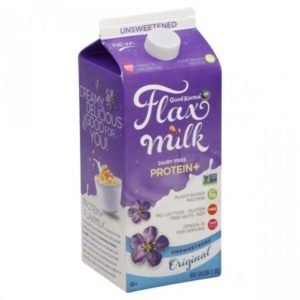
There are also many vegan, B12-fortified foods available these days. The new flax milk I started using for examplecontains 25% RDA of B12. In my opinion though, relying on these foods to meet all your B12 requirements is unrealistic.
I hope this helps you in your search for true vegan health! Please feel free to address the topic further on our Sexy Fit Vegan Forum and for a more expansive, detailed, technical explanation about B12, I recommend the article on VeganHealth.Org.
In Health & Happiness,
Ella
Sexy Fit Vegan Menu Guidelines
After years of research and experimentation, I want to share with you the guidelines I have created for myself, that allow me to be strong, lean, energetic, perform at my best, and simply feel good from the inside out!
I am realistic with my guide. For example, ideally, I would love to be 100% gluten free, but given I don’t have an intolerance, I eat things with gluten every now and then and don’t beat myself up about it. I have also kept it as simple as possible. Personally, I don’t count calories. If I follow this guide, and EAT SLOWLY, stopping when I’m full or just before, I can give my body what it needs, not more, not less. This takes practice though. If you have been eating processed foods, your body is all out of whack and will need some time to get its bearings straight and for your mind to connect with your system in a way that gives you this luxury. So until that happens, it may be best to keep a food log and take the time to figure out how to create a diet that is nutrient dense, contains lots of variety, meets your protein and other caloric and nutrient needs.

MY BASIC GUIDE:
- 3-4 Meals (solid &/or blended) + 1 Fresh Green Juice/Day
- Eat tons of dark leafy greens & other veggies daily (make sure a portion of them are RAW)
- Primarily Gluten Free
- Primarily Organic (Organic whenever the option is available.)
- Low in Grains (Counting quinoa and buckwheat as grain-like SEEDS. The more active you are, the more you may need whole grains to fuel you!)
- Variety of Raw Seeds & Nuts Daily in Moderation, soaked & sprouted when possible
- Soy in Moderation- ALWAYS ORGANIC (& non GMO)
- Legumes– Soak & Sprout When Possible
- A piece of fruit makes a great snack. Eat fruit on its own (not at the same time as other foods) when possible
- Smoothies and Protein Shakes are great ways to get lots of nutrients into your body. Kale & spinach can be added to them without changing their flavor! Hemp seeds and flax meal are also powerful super foods to add to shakes/smoothies. Raw vegan organic protein powders, can also be good if you are on the go (add water in a shaker bottle and you have a perfect snack.)
- Take a B-12 Supplement
- So wherever you are in your journey to a healthy, plant based diet, consider these guidelines when planning your meals for the day and week. If this is new for you, “winging it” will not work. Its going to take effort, but with your goal in front of you, your motivation within you, and your support system surrounding you, you CAN DO IT!!!!!

